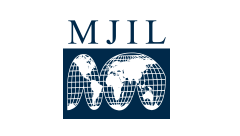Abstract
On December 19, 2008, the Convening Authority for the United States Military Commissions at Guantanamo Bay referred charges against Abd al-Rahim Hussein Muhammed Abdu Al-Nashiri for his role in the October 2000 bombing of the U.S.S. Cole. The charge sheet alleged that al-Nashiri committed several acts—including murder in violation of the law of war, perfidy, destruction of property—”in the context of and associated with armed conflict” on or about October 12, 2000 in connection with the bombing. At the time of the attack, the statement that the United States was engaged in an armed conflict would have been a surprise to many. The Cole bombing was routinely called a “terrorist attack” and the U.S. response involved numerous parallel investigations into, inter alia: identifying and finding those responsible for the attack; reviewing the actions of the commanding officer and crew of the U.S.S. Cole; and examining the vulnerabilities of U.S. forces abroad. And yet, in the aftermath of the 9/11 attacks and the U.S. military response to those attacks, many— including the U.S. government before the military commissions—argued that the Cole bombing was “one of the opening salvos of the terrorist war on Americans”3 and therefore part of the U.S. conflict with al-Qaeda. A look at these differing approaches to characterizing the U.S.S. Cole bombing and where it falls along the timeline of U.S. counterterrorism operations and contemporary armed conflicts highlights a significant uncertainty in our current understanding of the U.S. conflict with al-Qaeda: the question of when the conflict started. Most Americans would not have answered “yes” if asked whether the United States was at war in 2000— but the rhetorical concept of a “war on terror” has created a different perspective for some who now view pre-9/11 terrorist attacks, including the Cole bombing and the 1998 Embassy bombings in Kenya and Tanzania, as part of a coherent conflict. Similarly, our perspective on 9/11 itself, looking back thirteen years hence, is not necessarily the same as it was on the day of the attacks regarding whether America is at war. Many people doubtlessly felt that America was at war upon hearing of and seeing the attacks, but not in the manner or degree that Americans feel, or have been told, that we are in the years since that day. Uncertainty reigns over when this conflict actually started: did it begin on 9/11? When the United States launched its response in October 2001? With the bombing of the U.S.S. Cole? The 1998 Embassy bombings? With Osama bin Laden’s 1996 declaration of war? Earlier than that? A complicated web of operational authority, prosecutorial decisions, and legal analysis has left this question unanswered and significantly murkier than might be expected.
Recommended Citation
Laurie R. Blank & Benjamin R. Farley,
Identifying The Start of Conflict: Conflict Recognition, Operational Realities and Accountability in the Post-9/11 World,
36
Mich. J. Int'l L.
467
(2015).
Available at:
https://repository.law.umich.edu/mjil/vol36/iss3/3
Included in
International Law Commons, Military, War, and Peace Commons, National Security Law Commons

